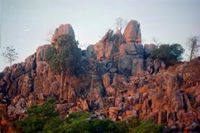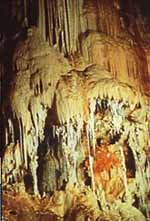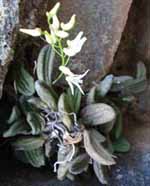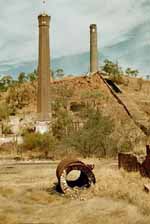

Chillagoe is the traditional home of the Wakamin aboriginal people, and their name for the area is Woothakata. The attractions of Chillagoe include Chillagoe-Mungana Caves National Park, fossils and minerals, Marble Quarries, Historic Mining, Steam engines and historic machinery, and spectacular outback scenery.
The geological wonders of Chillagoe were created 410 million years ago. At that time the Great Barrier Reef was located where Chillagoe now stands. A legacy of fossils, limestone caves, marble quarries and limestone outcrops make Chillagoe an amazing place to visit.
Added to the natural wonders are the history of humankind which include thousands of years of indigenous, and 120 years of European culture. Read more about the history of Chillagoe.
Chillagoe is 200 Kms west of Cairns, and is an overnight stop on the Savannahlander train journey. By car, it takes around 3 hours from Cairns and there is about 15 kilometers of unsealed road between Almaden and Chillagoe. Public transport options are limited but Chillagoe Observatory and Eco Lodge operates a bus service 3 times a week between Mareeba and Chillagoe.
With over six hundred documented caves and more being discovered, ranger-guided cave tours are available at the National Park and private tours can also be arranged with local tour operators. Serious cavers should get in contact with the local Chillagoe Caving Club for advice and information.
The land around Chillagoe was once an ancient seabed with coral reefs. Consequently, high quality ammonites, belemnites, and bivalves can be found around the Walsh River, along with fossilized coral, crinoids, and brachiopods.
Dinosaur fossils can be found around Chillagoe. The most complete fossilized skeleton of an elasmosaur was found nearby in 1999, and a life-size statue is on display in the town.
Ancient mammals and mega-fauna roamed Chillagoe, and their fossilized remains are commonly fossicked in the area, including inside the limestone caves. Fossil teeth and bones of the marsupial lion, Tasmanian tiger, long-face kangaroo, and Diprotodon are some of the common mammal fossils found.
Some of the minerals and semi-precious stones that can be found around Chillagoe include chalcedony, azurite, jasper, topaz, magnetite, and garnet crystals. Quartz crystals can be found in Muldiva Creek. Chillagoe was once commercially mined for copper, silver, and gold. There is no designated fossicking field, and laws and regulations surrounding fossicking and land use in Queensland can be complicated, so make sure you have the right permissions and permits required if you want to go fossicking.
A wide range of accommodation can be found around Chillagoe including a traditional station Homestead (ranch), a motel, caravan park, cabins, eco-lodge, and camping areas.
The township of Chillagoe, has an all-weather sealed airstrip and boasts a Post Office, Commonwealth Bank agency, two pubs, a museum, general store, tennis courts, fuel depot, hospital and Laundromat.
All major credit cards are accepted and EFTPOS facilities are available at the Post Office, store and hotels.



Places Nearby: Lappa Lappa Mareeba Irvinebank